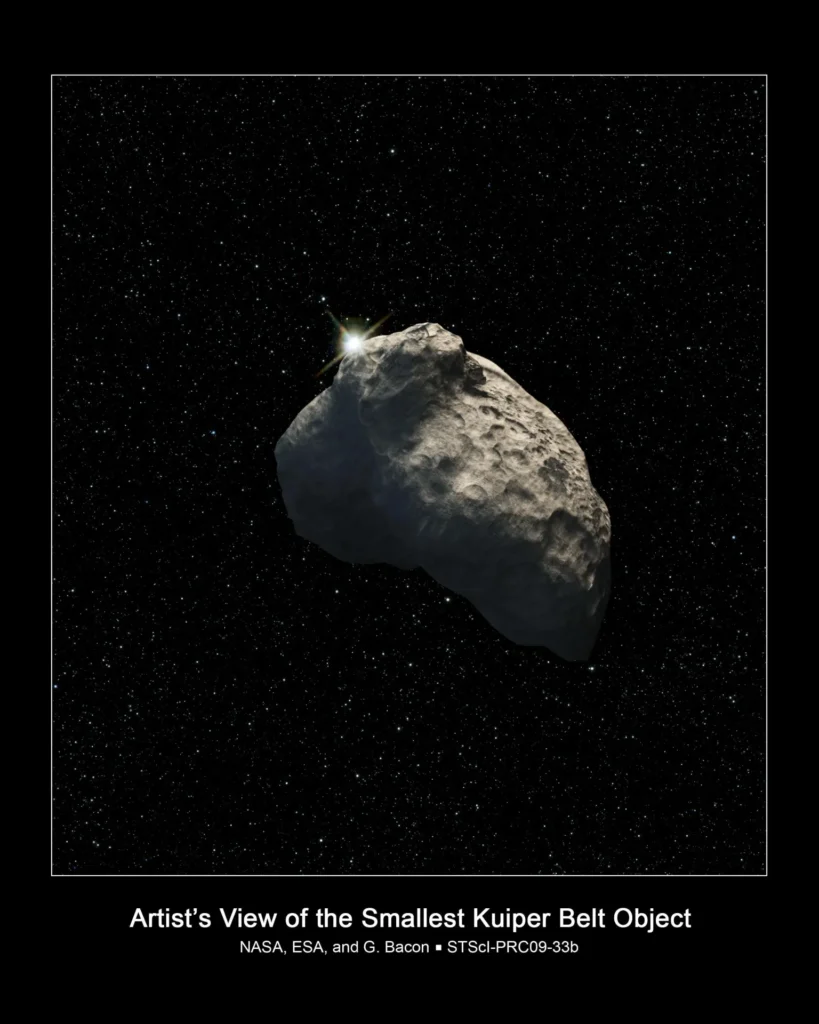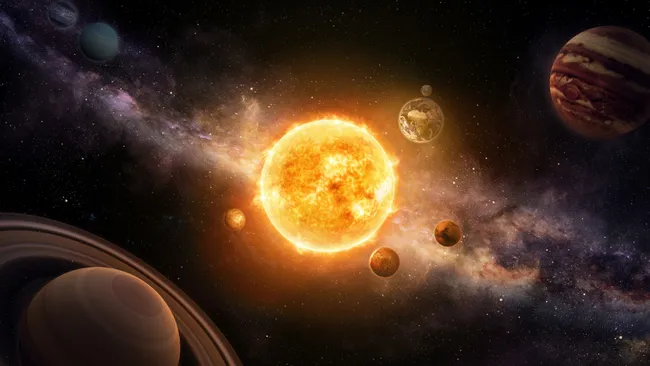Astronomers recently discovered distant objects beyond the Kuiper Belt using the Subaru Telescope, revealing what could be an outer ring of celestial bodies orbiting the Sun. This new discovery suggests a complex structure at the edge of the Solar System, challenging our understanding of its formation. The observed objects hint at a larger, previously unobserved population of bodies beyond what was traditionally considered the Solar System’s boundary.
The Known Kuiper Belt and its Significance

NASA, ESA and G. Bacon
The Kuiper Belt, a region spanning 30 to 55 astronomical units (AU) from the Sun, consists of icy bodies, dwarf planets, and comet-like objects. Discovered in the 1990s, the Kuiper Belt quickly became a crucial focus for studying Solar System history because its objects contain remnants from the early Solar System, preserved in a frozen state. These Kuiper Belt Objects (KBOs) provide insight into the formation processes that took place more than four billion years ago.
NASA’s New Horizons mission, which reached the Kuiper Belt in 2015, conducted close observations of Pluto and other KBOs, capturing data that has reshaped scientists’ understanding of the region. In particular, New Horizons showed the diversity of objects in the Kuiper Belt, revealing their varied compositions, shapes, and orbital patterns. Observatories on Earth, like the Subaru Telescope in Hawaii, further support these missions by conducting large-scale surveys of the Kuiper Belt and even identifying distant objects for spacecraft to investigate up close.
Traditionally, the Kuiper Belt has been seen as the last major structure within the Solar System. However, recent Subaru observations suggest that objects may exist even farther out, in what could be considered a “second ring” or an outer extension of the Kuiper Belt.
Discovery Beyond the Kuiper Belt
Subaru’s discovery of 11 objects at distances between 70 and 90 AU from the Sun marks a significant shift in our understanding of the Solar System’s edge. This discovery highlights a previously unobserved “outer ring” that is separated from the Kuiper Belt by a gap, a pattern that mirrors similar structures seen in other young planetary systems. The presence of these objects suggests that the formation of the Solar System may have created multiple “rings” of debris, extending farther than previously believed.
The observed gap between the Kuiper Belt and this new outer ring resembles patterns seen in the formation of other planetary systems. Using telescopes like ALMA (Atacama Large Millimeter/submillimeter Array), astronomers have observed that young star systems often have rings and gaps in the surrounding gas and dust, indicating zones where planets are forming or have already formed. The similarities between these distant systems and our Solar System hint that the Solar System may share structural characteristics with other planetary systems in the galaxy.
This new outer ring could contain objects formed from the same primordial material as the inner Solar System but trapped in the outer regions, where they were preserved in near-original states. This outer ring may consist of objects similar in composition to the Kuiper Belt, potentially including icy bodies and primitive rocky objects.
Implications for Understanding Solar System Formation
The discovery of an outer ring beyond the Kuiper Belt provides critical evidence supporting theories that the solar nebula—the gas and dust cloud that formed the Solar System—was more extensive than previously thought. If confirmed, this finding suggests that the early Solar System was not unique in its structure. Instead, it may be similar to the architecture of other planetary systems, with rings and gaps serving as indicators of planet formation processes.
This alignment with observed planetary systems in other parts of the galaxy supports the idea that the Solar System’s formation was influenced by similar processes. As young stars form, surrounding materials like gas and dust form rings, often with gaps that indicate areas cleared by emerging planets. The new outer ring beyond the Kuiper Belt could represent an early feature of the Solar System’s formation, one that parallels the features of these distant systems.
For example, scientists believe that the planets within our Solar System migrated from their initial positions, possibly disturbing the Kuiper Belt and creating the gap between it and the newly discovered outer ring. This theory aligns with the observed rings and gaps in young planetary systems, which provide clues about the forces that influence planetary migration and ring formation. This new outer ring could, therefore, hold important information about how the planets interacted with the early Solar System’s debris, influencing the final arrangement of planets and other objects in orbit around the Sun.
Broader Impact on the Search for Life
The discovery of a larger-than-expected solar nebula extends beyond understanding the Solar System; it has implications for the search for extraterrestrial life. Currently, one of the biggest challenges in astrobiology is understanding the requirements for life beyond Earth. This discovery hints that the conditions that supported planet formation in our Solar System might be common in other planetary systems, increasing the chances of finding planets with similar conditions in the galaxy.
If the Solar System’s formation is representative of how other systems evolve, then the environmental factors necessary for life, such as the availability of organic materials and stable orbits, could be more widespread. Many scientists believe that life’s essential building blocks, such as organic molecules and water, likely came from the outer regions of the Solar System, either as icy bodies or dust. If these materials were abundant in our Solar System’s outer rings, similar processes could deliver life’s essential components to planets around other stars.
The new discoveries of these outer objects in our Solar System might also parallel findings in other planetary systems, particularly with the discovery of exoplanets in habitable zones. Exoplanets around M-dwarf stars, for instance, are often found in multi-planet systems with complex orbital structures, resembling the architecture now observed beyond the Kuiper Belt. This alignment could encourage further exploration of such systems, particularly those with ringed structures, for signs of habitability and even life.
Conclusion: The Path Ahead
The Subaru Telescope’s findings signal the beginning of a new phase in Solar System exploration. Future telescopes and missions will further investigate these newly found objects, potentially confirming their origin and assessing their compositions. These outer objects could offer a glimpse into the early history of the Solar System and refine our understanding of how it developed its current structure.
Moreover, studying this outer ring may offer clues about the forces and materials that shaped not only our Solar System but also other planetary systems across the galaxy. With advanced telescopes like the James Webb Space Telescope and next-generation ground-based observatories, astronomers are in a position to learn more about distant planetary systems and draw comparisons with our own.
Reference:
Buie, M. W., Spencer, J. R., Porter, S. B., Benecchi, S. D., Parker, A. H., Stern, S. A., Belton, M., Binzel, R. P., Borncamp, D., DeMeo, F., Fabbro, S., Fuentes, C., Furusawa, H., Fuse, T., Gay, P. L., Gwyn, S., Holman, M. J., Karoji, H., Kavelaars, J. J., … Zangari, A. M. (2024, September 11). The New Horizons extended mission target: Arrokoth search and discovery.



















